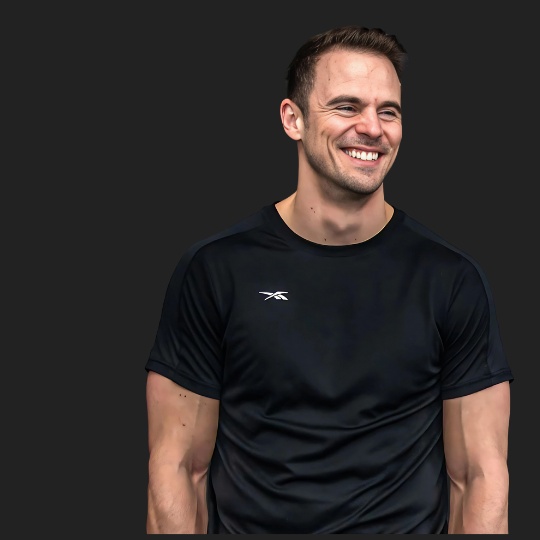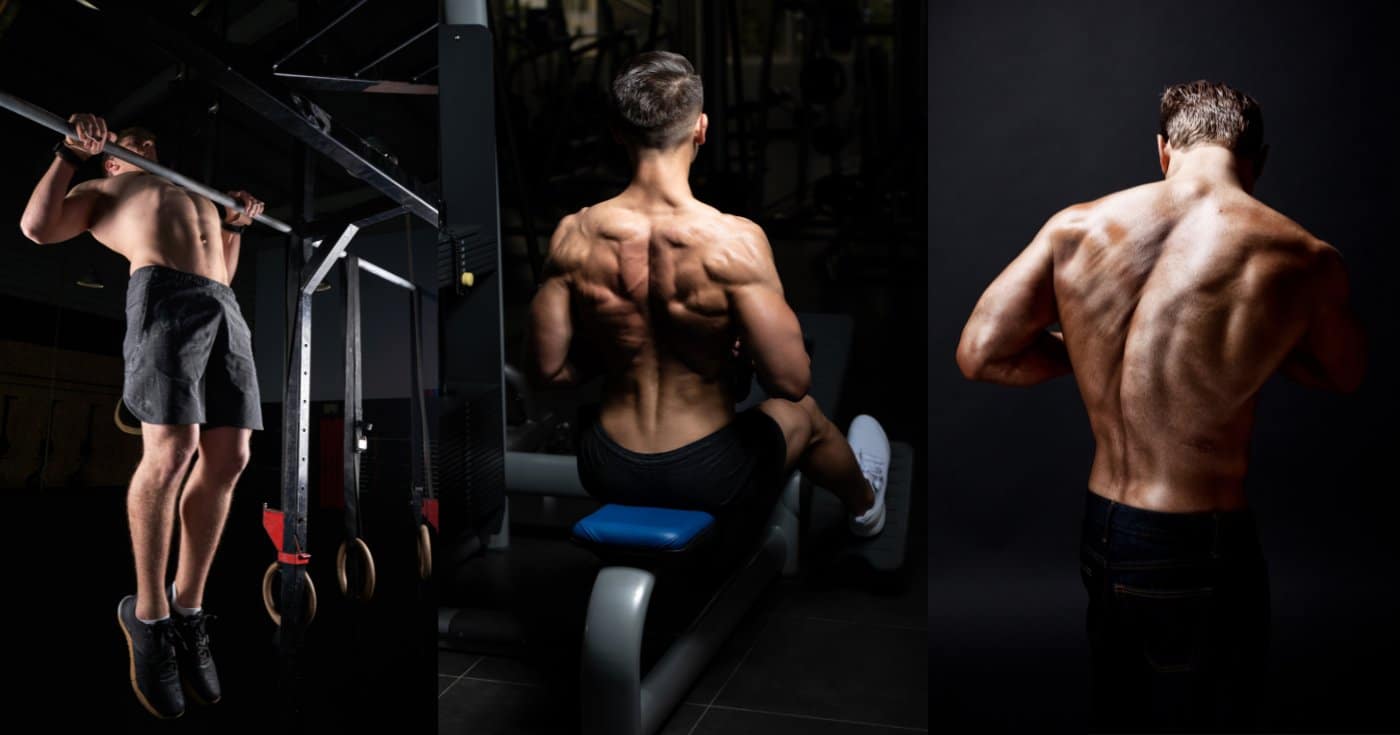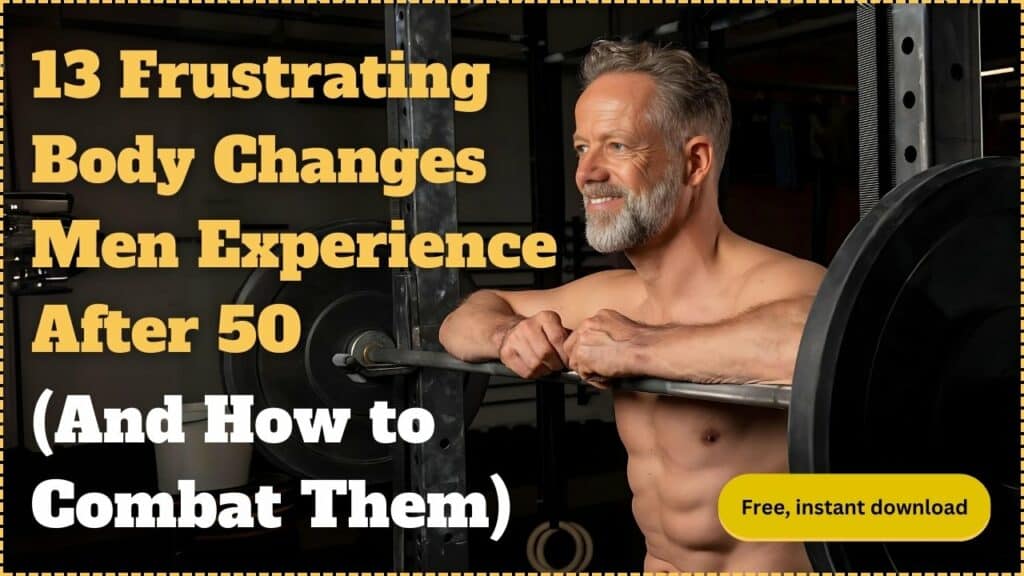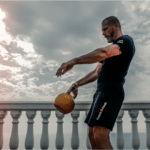Discover why training your back is essential for more than just aesthetics, impacting everything from posture to injury prevention.
This article breaks down the main back exercises for all fitness levels.
Learn how targeted workouts can enhance your overall health, reduce discomfort, and improve athletic performance. Uncover exercises that cater to every need, whether you’re at home with minimal equipment or in the gym, and explore the anatomy behind what makes a strong back so crucial.
Jump to:
- Why Are Back Workouts Important?
- Comprehensive Guide to Back Exercises
- Barbell Deadlift
- Pull-ups
- Lat Pulldown
- Quadruped Single-arm Dumbbell Row
- Back Extension
- Suspended Row
- Resistance Band Pull-Apart
- Wood Chop
- Good Morning
- Wide Dumbbell Bent-over Row
- Superman
- Renegade Dumbbell Row
- Reverse Fly
- Smith Machine Row
- Seated Row
- Chest-supported Row
- Dumbbell Pullover
- High Pull
- Rack Pulls
- Forearm Plank
- Best Exercises for Specific Needs
- Special Focus Exercises
- Specific Workouts for Different Levels and Equipment
- Understanding the Back Muscles
- Back Exercises FAQ
- References
Why Are Back Workouts Important?
Benefits for Posture, Strength, Injury Prevention, and Overall Health
Engaging in regular back workouts transcends aesthetic appeal, offering profound benefits for posture, strength, injury prevention, and overall health. A strong back is foundational to both daily activities and athletic performance, making this aspect of fitness essential for everyone.
The Benefits of Training Your Back Muscles
- A More Balanced Body: Training the back muscles ensures a harmonious muscle balance across the body. This balance is crucial for maintaining proper posture and reducing the risk of injuries, especially those related to overuse and muscular imbalances.
- Stronger Back, Better Posture: A well-developed back supports the spine, encouraging an upright posture and alleviating pressure on the lower back. This can significantly reduce the discomfort associated with prolonged sitting and other sedentary activities.
- A Strong Back Helps You to Be Stronger Everywhere: The back muscles play a pivotal role in nearly all upper and lower body movements. Strengthening these muscles enhances performance in other exercises, such as squats, deadlifts, and overhead presses, by providing a solid base of support.
- The V-Taper Advantage: Aesthetically, a strong and well-defined back contributes to the coveted V-taper look, where the upper body tapers down to the waist. This visual effect not only signifies strength and fitness but also improves the overall appearance of the physique.
- Research indicates that the greatest activity of specific back muscles (e.g., rectus abdominis, external oblique, and erector spinae) is found in free-weight exercises, highlighting the importance of exercise specificity for targeted muscle activation (Oliva-Lozano & Muyor, 2020).
Comprehensive Guide to Back Exercises
Barbell Deadlift
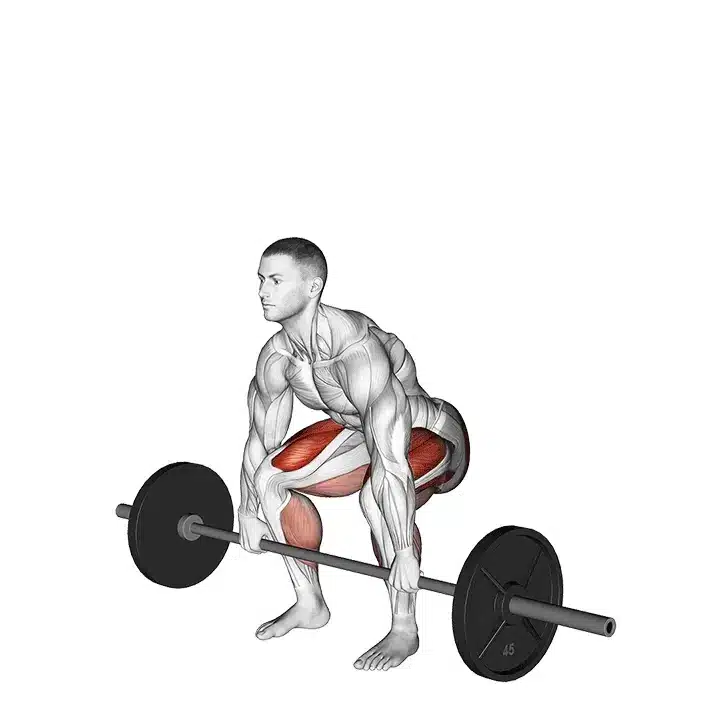
The Barbell Deadlift is a compound exercise that strengthens the entire back, engaging the lower and upper back, glutes, and hamstrings, suitable for building overall body strength.
- Stand with feet hip-width apart, with the barbell over the center of your feet.
- Bend at the hips and knees to grip the bar with hands just outside of legs, using an overhand or mixed grip.
- Keeping your chest up and back arched, lift the bar by straightening your hips and knees to a standing position.
- Lower the bar to the floor by hinging at the hips and bending the knees, maintaining a neutral spine throughout the movement.
Pull-ups
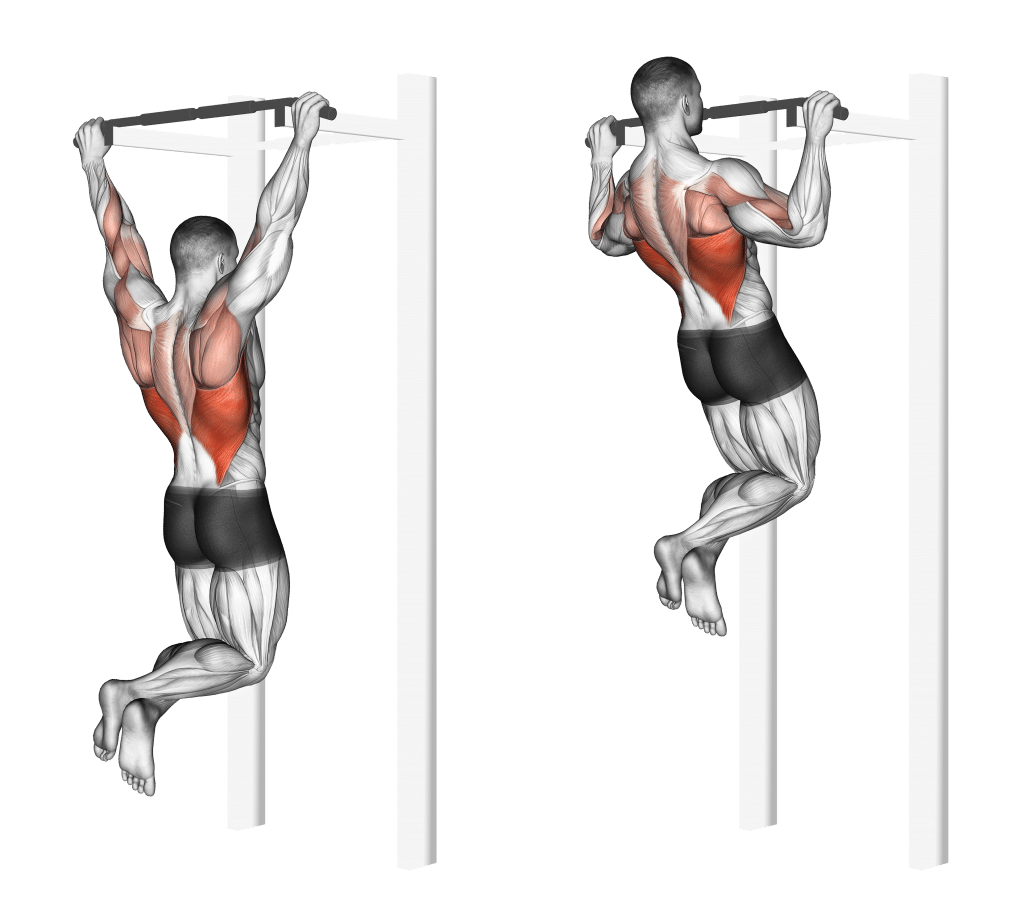
Pullups are a fundamental upper-body exercise that strengthen the back, shoulders, and arms, promoting functional upper body strength.
- Grip the pullup bar with hands slightly wider than shoulder-width, palms facing away from you.
- Hang with your arms fully extended, shoulders down and back.
- Pull yourself up until your chin is above the bar, focusing on using your back muscles.
- Lower back to the starting position with control, keeping the movement smooth.
Lat Pulldown
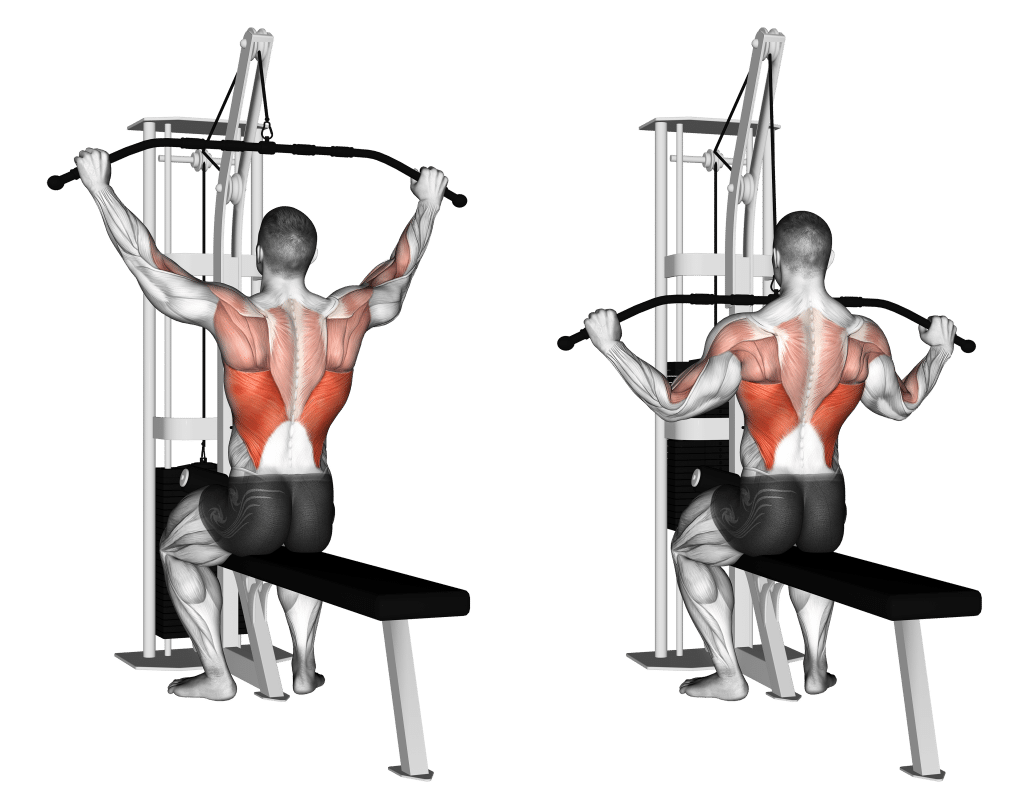
The lat pulldown is a staple in back training, focusing on the latissimus dorsi to improve upper body strength and create a wider back appearance.
- Sit down at a lat pulldown station, securing your thighs under the pads.
- Grasp the bar with a wide grip, arms fully extended.
- Pull the bar down towards your chest, drawing your shoulder blades down and back.
- Slowly release the bar back to the starting position, controlling the movement throughout.
Quadruped Single-arm Dumbbell Row
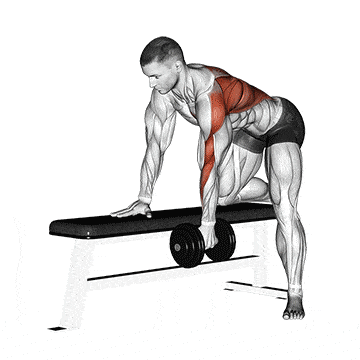
This variation of the dumbbell row targets the upper back and lats while engaging the core, performed on all fours for added stability and focus.
- Begin on all fours with a dumbbell placed on the floor beside you, hands under shoulders and knees under hips.
- Keeping your spine neutral, pick up the dumbbell with one hand, rowing it towards your hip while keeping your elbow close to your body.
- Lower the dumbbell slowly back to the starting position.
- Maintain a stable core throughout the exercise to prevent rotation of the torso.
Back Extension
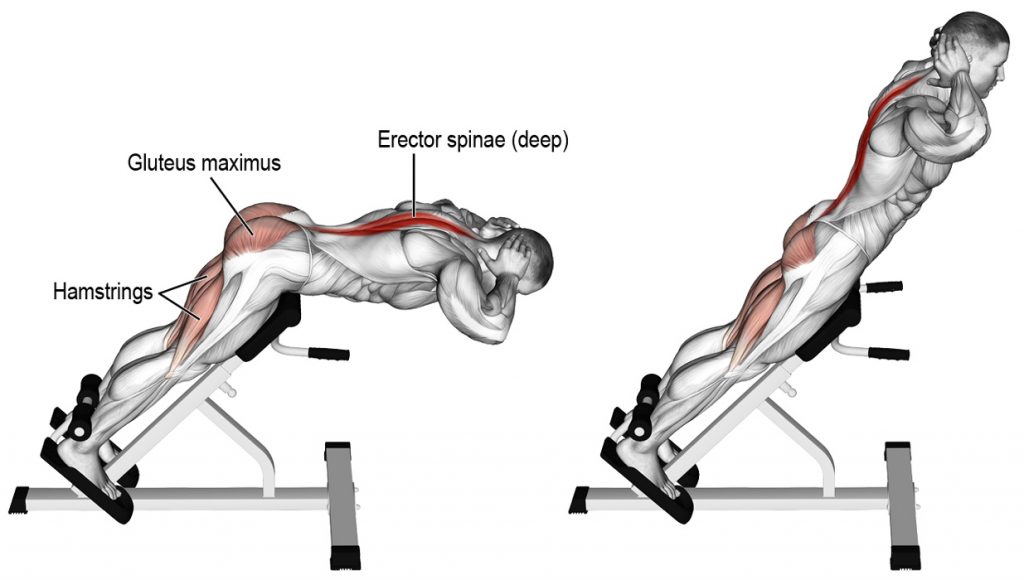
Back extensions specifically target the erector spinae muscles in the lower back, crucial for core strength and reducing lower back pain.
- Position yourself on a back extension bench, securing your feet and locking your ankles in place.
- Cross your arms over your chest or place them behind your head.
- Bend forward at the waist, then lift your torso back up to a straight line with your legs.
- Move in a controlled manner, focusing on engaging your lower back muscles.
Suspended Row
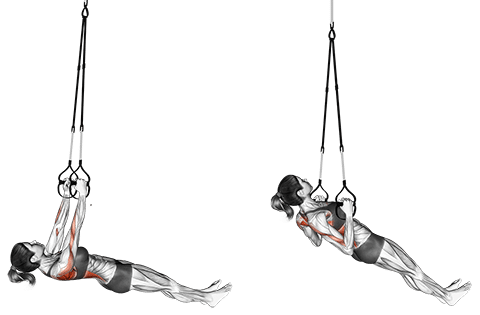
Suspended rows use your body weight as resistance, focusing on the mid and upper back muscles, including the rhomboids and trapezius, to enhance back strength and posture.
- Grip the handles of a suspension trainer, leaning back with your body straight and heels on the ground.
- Pull your body towards your hands, retracting your shoulder blades as you move.
- Pause briefly at the top of the movement, then lower yourself back to the starting position with control.
- Ensure your core is engaged throughout to maintain a straight body line.
Resistance Band Pull-Apart
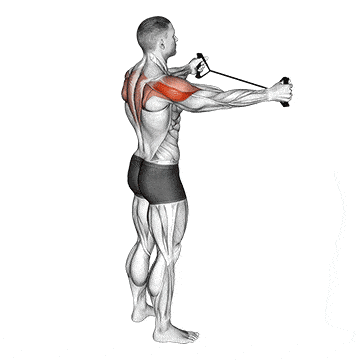
A resistance band pull-apart is a simple, yet effective exercise for targeting the posterior shoulder and upper back muscles, enhancing shoulder stability and posture.
- Stand with feet shoulder-width apart, holding a resistance band with both hands in front of you at chest level.
- Ensure arms are fully extended and parallel to the floor.
- Pull the band apart horizontally, stretching it out to the sides until your hands are in line with your shoulders.
- Slowly return to the starting position, maintaining tension on the band throughout the movement.
Wood Chop
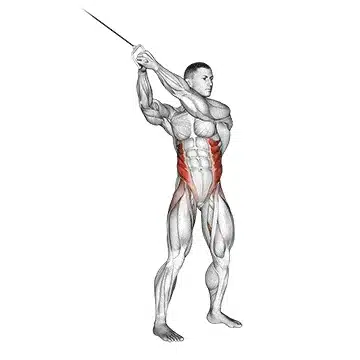
The wood chop combines rotational movement with resistance, targeting the obliques, shoulders, and both the upper and lower back, promoting functional strength and core stability.
- Stand with your feet shoulder-width apart, holding a weight or medicine ball with both hands.
- Start with the weight on one side of your body, near your hip.
- Lift the weight diagonally across your body to the opposite shoulder, rotating your torso as you move.
- Reverse the motion to return to the starting position, controlling the weight throughout the movement.
Good Morning
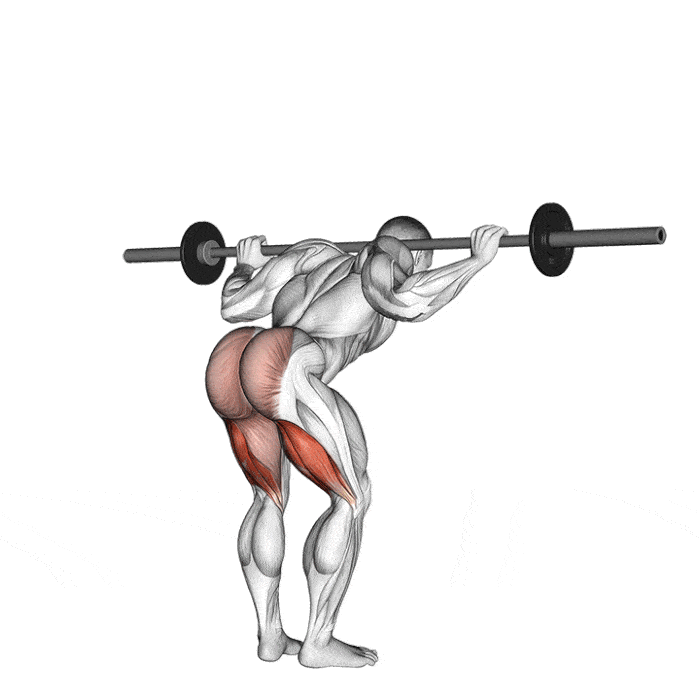
The Good Morning exercise is a lower back-focused movement that also engages the hamstrings and glutes, offering a unique way to strengthen the posterior chain.
- Stand with feet shoulder-width apart, a slight bend in the knees, and place a barbell across your shoulders behind your neck.
- Keep your back straight and core engaged, hinge at the hips to lower your torso forward until it’s almost parallel to the floor.
- Pause, then slowly return to the starting position by extending your hips.
- Ensure your head remains neutral, aligned with your spine throughout the movement.
Wide Dumbbell Bent-over Row
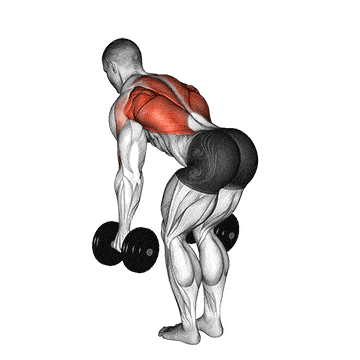
The Wide Dumbbell Bent-over Row targets the upper back, including the rhomboids and traps, with a wider grip enhancing the range of motion and engagement.
- Stand with feet hip-width apart, holding a dumbbell in each hand with palms facing you.
- Hinge at the hips to bring your torso forward, arms extended directly under the shoulders.
- With elbows flared out to the sides, row the dumbbells towards your hips, squeezing your shoulder blades together at the top.
- Lower the dumbbells slowly back to the starting position, keeping the movement controlled.
Superman
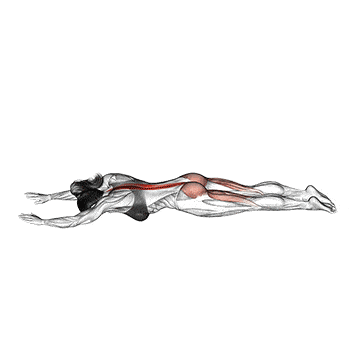
The Superman exercise focuses on the lower back and is unique in its ability to strengthen the back extensors without any equipment, promoting spinal health and stability.
- Lie face down on the floor, legs straight out, arms extended in front of you.
- Simultaneously lift your arms, chest, and legs off the floor, engaging your back muscles.
- Hold the position for a few seconds, then slowly lower back down to the starting position.
- Focus on engaging your back muscles throughout the movement, avoiding strain on the neck.
Renegade Dumbbell Row
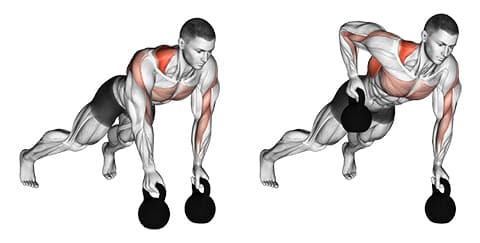
Renegade dumbbell rows combine core stabilization with upper back and arm strength, targeting multiple muscle groups simultaneously.
- Start in a high plank position with a dumbbell in each hand, positioned directly under the shoulders.
- Stabilize your body on one arm and row the opposite dumbbell towards your waist, keeping your body as still as possible.
- Lower the dumbbell back to the ground and repeat on the other side.
- Maintain a straight line from head to heels, engaging the core throughout the exercise.
Reverse Fly
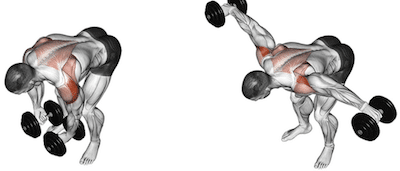
The reverse fly targets the rear deltoids, rhomboids, and traps, essential for correcting posture and balancing the shoulder muscles.
- Lean forward at the waist with a dumbbell in each hand, palms facing each other, knees slightly bent.
- With a slight bend in the elbows, lift the dumbbells to the side until your arms are parallel to the floor.
- Squeeze your shoulder blades together at the top of the movement.
- Lower the weights back down with control, keeping the movement in the shoulders rather than the arms.
Smith Machine Row
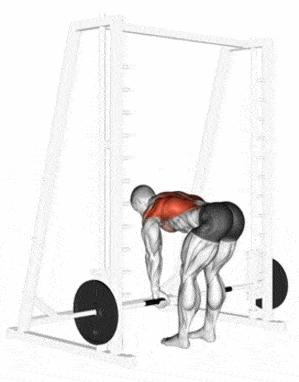
The Smith machine row is a controlled rowing exercise that targets the middle to upper back muscles, offering stability and precision in weight placement.
- Stand facing the Smith machine bar with feet shoulder-width apart.
- Bend at the hips to grasp the bar with an overhand grip, arms fully extended.
- Pull the bar towards your lower abdomen, squeezing your shoulder blades together at the top of the movement.
- Slowly lower the bar back to the starting position, maintaining a flat back throughout the exercise.
Seated Row
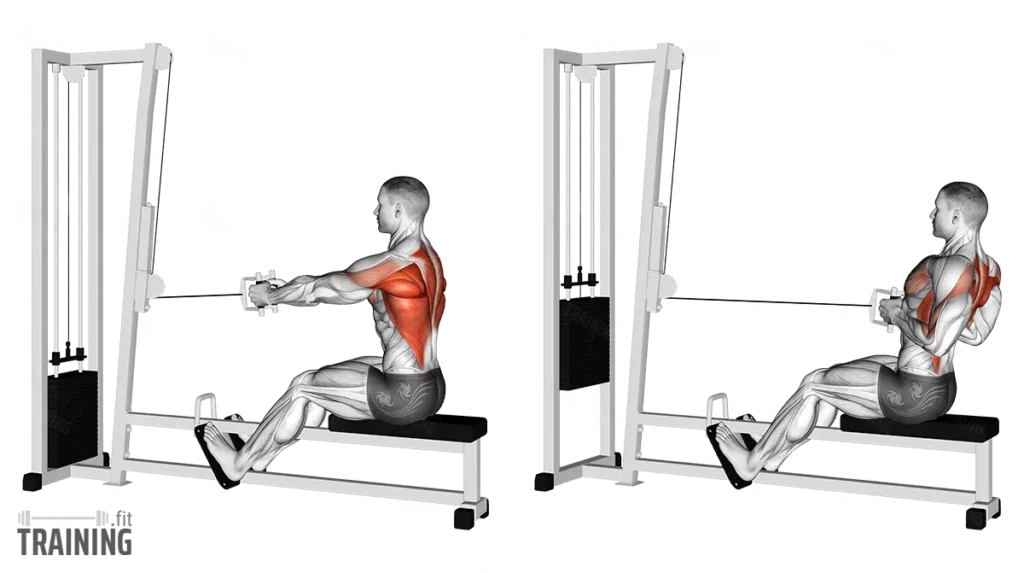
Seated rows, specifically on a cable machine, focus on the mid-back muscles, enhancing back thickness and strength through a concentrated pulling motion.
- Sit at a cable row station with your feet secured and knees slightly bent.
- Grasp the handle with both hands, keeping your back straight and core engaged.
- Pull the handles towards your waist, elbows skimming your sides, squeezing your back muscles at the end of the movement.
- Slowly extend your arms back to the starting position, controlling the weight throughout the movement.
Chest-supported Row

Chest-supported rows isolate the back muscles by eliminating lower back strain, perfect for targeting the lats, rhomboids, and traps with minimal risk of injury.
- Adjust the bench to a 45-degree incline and lie chest-down with a dumbbell in each hand.
- Let your arms hang straight down, palms facing each other.
- Row the dumbbells upwards, squeezing your shoulder blades together at the top of the movement.
- Lower the dumbbells with control back to the starting position.
Dumbbell Pullover
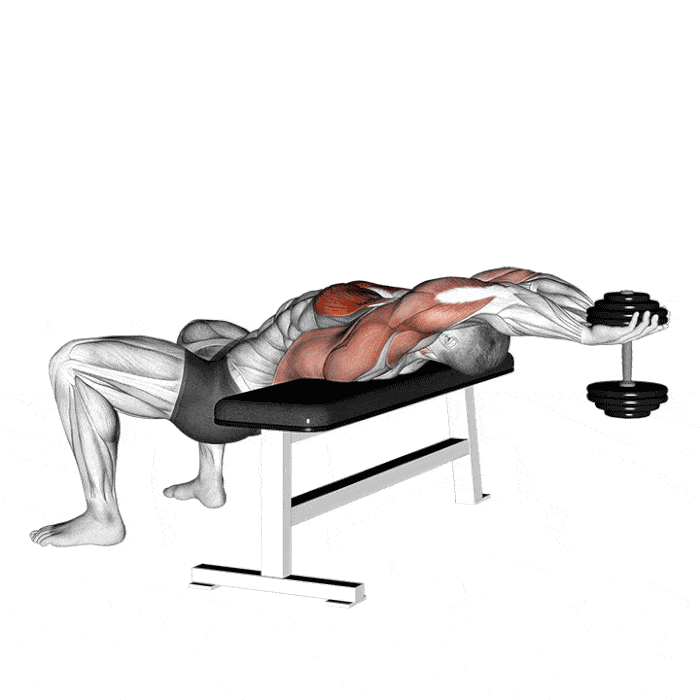
Dumbbell pullovers work both the chest and back, uniquely targeting the lats and serratus anterior, promoting upper body flexibility and strength.
- Lie perpendicular on a bench with only your upper back and shoulders in contact, hips below the bench, knees bent, and feet flat on the floor.
- Hold a dumbbell with both hands above your chest, arms extended.
- Lower the dumbbell back and over your head, keeping your arms slightly bent, until your upper arms are in line with your torso.
- Bring the dumbbell back to the starting position, engaging your lats and chest.
High Pull
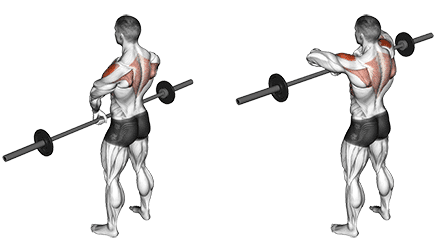
The High Pull is a dynamic compound exercise that targets the upper back, shoulders, and traps, known for its effectiveness in building explosive power and strength.
- Begin with feet shoulder-width apart, gripping a barbell or set of dumbbells at knee level with an overhand grip.
- In a swift movement, lift the weights up towards your chin, leading with your elbows and keeping the weights close to your body.
- Lower the weights back down in a controlled manner to the starting position.
- Keep your core engaged and back straight throughout the movement to prevent injury.
Rack Pulls
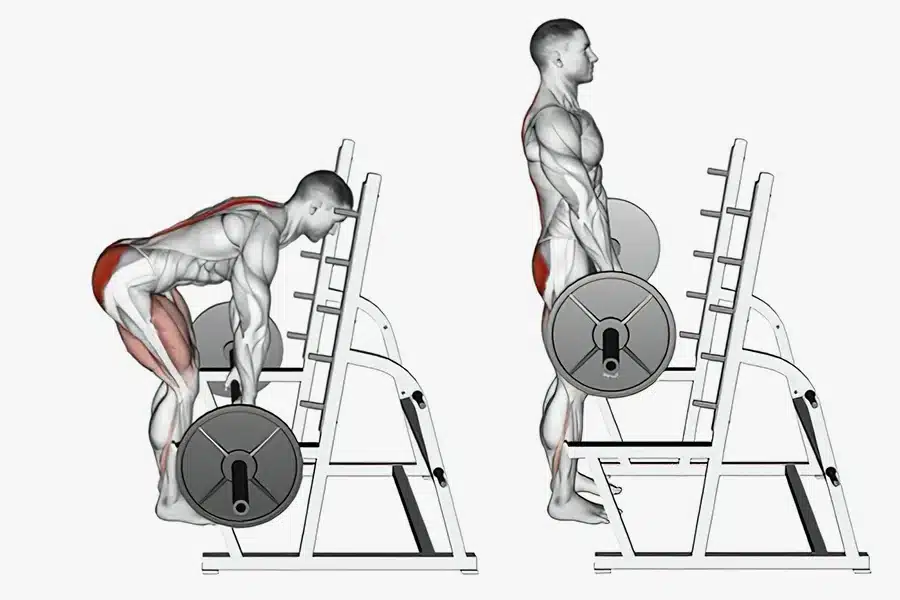
Rack pulls focus on the upper portion of the deadlift, targeting the lower back, traps, and forearms by utilizing a shorter range of motion for increased weight capacity.
- Set a barbell on a rack at knee height.
- Stand with your feet hip-width apart, bending at the hips and knees to grip the bar with an overhand grip.
- Lift the bar by straightening your hips and knees to a fully upright position, keeping your back straight.
- Lower the bar back to the rack carefully, maintaining control throughout the movement.
Forearm Plank
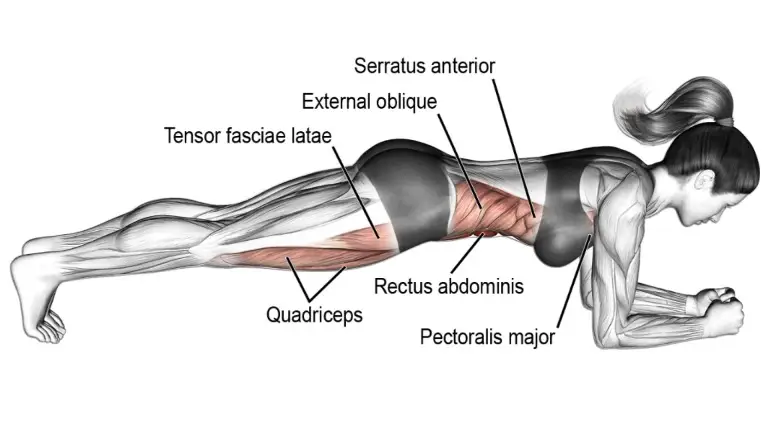
Forearm plank is a core stabilizing exercise that also engages the shoulders and back, improving posture and overall body strength.
- Begin lying face down, then rise onto your forearms and toes, elbows directly under your shoulders.
- Keep your body in a straight line from head to heels, engaging the core, glutes, and back.
- Hold the position, ensuring your hips do not sag or lift too high.
- Breathe steadily, maintaining the posture for the desired duration.
Best Exercises for Specific Needs
Lower Back Exercises
Frog Glute Bridge and Angel of Death are excellent for targeting the lower back and glutes, helping to build strength and stability in the lumbar region. These exercises are beneficial for enhancing mobility and supporting the spine.
Fixing Low Back Pain
Wall Drivers and Threading the Needle offer gentle yet effective ways to alleviate low back pain. They focus on stretching and strengthening the muscles around the spine, promoting flexibility and reducing tension.
Dumbbell Back Workouts
Incorporating Weighted Pullups and Dumbbell Dead Rows into your routine can significantly improve upper and lower back strength. These exercises target a wide range of back muscles, from the lats to the erector spinae, making them ideal for building a muscular and balanced back.
Home Workouts
For those training at home, Back Widow, Sliding Lat Pulldown, and Reverse Superman are excellent exercises. They require minimal equipment and are effective for strengthening and toning the back muscles, making them accessible and convenient for any fitness enthusiast.
Special Focus Exercises
Exercises for Strengthening Your Back, Lower Back, and Fixing Back Posture
To strengthen the back and improve posture, a combination of stability and strength exercises is key. Frog Glute Bridge and Angel of Death not only target the lower back but also engage the core and glutes, providing a solid foundation for a healthy posture.
Motor Control Exercise (MCE) is designed to restore control and coordination of trunk muscles, focusing on activating deep trunk muscles and integrating them into more complex and functional tasks. It is shown to be effective for reducing pain and improving function in chronic low back pain, comparable to other exercises and manual therapies (Saragiotto et al., 2016).
Must-Do Exercises for Low Back
Back Widow and Sliding Lat Pulldown are must-do exercises for targeting the lower back, especially for those working out at home. They help in building a strong lower back, essential for overall back health and functionality.
For comprehensive lower back care, incorporating exercises like the Reverse Superman into your routine can further enhance strength and flexibility, offering a well-rounded approach to back wellness.
Specific Workouts for Different Levels and Equipment
Beginner Workout
Focus: Fundamental strength and conditioning
- Bodyweight Squats
- 3 sets of 12 reps
- Push-ups
- 3 sets of 8-10 reps (Knee push-ups for modifications if needed)
- Dumbbell Shoulder Press
- 3 sets of 10 reps (Lightweight)
- Plank
- 3 sets, hold for 30 seconds each
- Bent-over Dumbbell Rows
- 3 sets of 10 reps per arm (Lightweight)
Rest: 60 seconds between sets
Advanced Workout
Focus: Intensity and muscle building
- Barbell Deadlift
- 4 sets of 6-8 reps
- Pull-ups
- 4 sets to failure
- Barbell Squats
- 4 sets of 8-10 reps
- Bench Press
- 4 sets of 8 reps
- Barbell Bent-Over Row
- 4 sets of 8 reps
Rest: 90 seconds between sets
Bodyweight Workout
Focus: Endurance and flexibility
- Jump Squats
- 3 sets of 15 reps
- Push-up with Rotation
- 3 sets of 10 reps (5 each side)
- Walking Lunges
- 3 sets of 12 reps per leg
- Tricep Dips on Chair
- 3 sets of 12 reps
- Plank to Push-up
- 3 sets of 8 reps per side
Rest: 45 seconds between sets
Dumbbell Only Workout
Focus: Full body strength and conditioning
- Goblet Squats
- 3 sets of 12 reps
- Single-arm Dumbbell Rows
- 3 sets of 12 reps per arm
- Dumbbell Floor Press
- 3 sets of 10 reps
- Dumbbell Deadlift
- 3 sets of 10 reps
- Dumbbell Lateral Raises
- 3 sets of 12 reps
Rest: 60 seconds between sets
Understanding the Back Muscles
Back Anatomy Overview
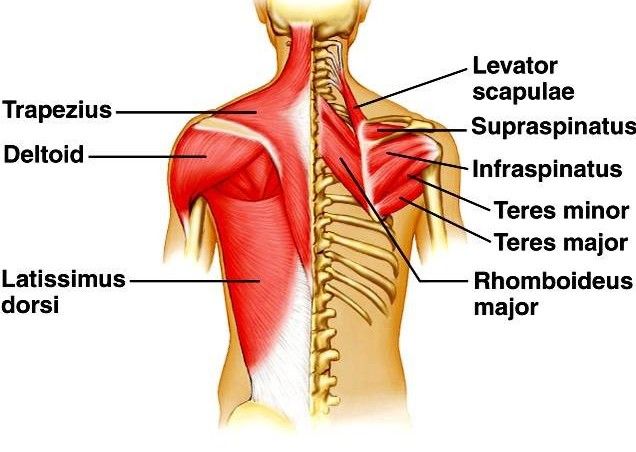
Our back consists of a complex structure of muscles and tendons that support the spine, aid in movement, and contribute to overall strength and stability. Key components include the latissimus dorsi, trapezius (upper and lower sections), erector spinae, rotator cuff, and teres major. Each plays a pivotal role in back functionality.
Latissimus Dorsi (Lats)
The latissimus dorsi, commonly referred to as the “lats,” are large, flat muscles that cover most of the lower back. They are responsible for arm extension, adduction, and rotation. When developed, lats contribute significantly to the V-shaped torso many athletes and fitness enthusiasts aspire to achieve.
Trapezius (Upper and Lower Traps)
Divided into upper, middle, and lower fibers, the trapezius muscles extend from the neck to the middle of the back. Upper traps help elevate the shoulders, while the lower traps contribute to scapular depression and retraction. Strengthening these muscles can improve posture and shoulder stability.
Erector Spinae
This muscle group runs along the spine from the lower back to the skull, crucial for maintaining an upright posture. The erector spinae helps extend the back and, when strengthened, can reduce lower back pain, a common ailment in today’s sedentary lifestyle.
Rotator Cuff
Comprising four muscles, the rotator cuff encases the shoulder joint, facilitating stability and allowing a wide range of movements. Despite its location, strengthening the rotator cuff benefits overall back strength and health by supporting shoulder mechanics.
Teres Major
Situated near the lats, the teres major assists with arm rotation and adduction. Though smaller, its proper conditioning is essential for shoulder health and complements the back’s aesthetic appearance by contributing to upper body width.
Back Exercises FAQ
What is the best exercise for strengthening your back?
Deadlifts are widely recognized as one of the best exercises for strengthening your back. They target the lower back, glutes, and hamstrings, and engage the upper back and lats, providing a comprehensive workout that improves overall back strength and stability.
How do I train all parts of my back?
To train all parts of your back, incorporate a variety of exercises targeting the upper, middle, and lower regions. Include pull-ups for the upper back, rows (like the bent-over row or seated cable row) for the middle back, and deadlifts or back extensions for the lower back. This ensures balanced development across the entire back.
Best exercises for lower back pain
Exercises like the cat-cow stretch, pelvic tilts, and bird-dog exercises are beneficial for alleviating lower back pain. These movements help to strengthen the core and lower back muscles, increase flexibility, and reduce tension in the lumbar region.
How often should I train my back?
Training your back 2-3 times a week allows for adequate rest and recovery while promoting muscle growth and strength. Ensure to space out these workouts evenly throughout the week to prevent overtraining and to allow muscles to recover.
What is the most effective back exercise?
The most effective back exercise can vary depending on individual goals and fitness levels, but pull-ups and rows are highly effective for developing a strong, muscular back. These exercises work multiple back muscles and can be adjusted in intensity to suit various training needs.
Is It Okay to Do Back Muscle Workouts Every Day?
It is not recommended to do intense back muscle workouts every day due to the risk of overtraining and injury. Muscles need time to recover and grow stronger, so incorporating rest days or focusing on different muscle groups on alternate days is essential for sustainable progress.
References
- Saragiotto, Bruno T. MSc∗; Maher, Christopher G. PhD∗; Yamato, Tiê P. MSc∗; Costa, Leonardo O.P. PhD†; Costa, Luciola C. Menezes PhD†; Ostelo, Raymond W.J.G. PhD‡,§; Macedo, Luciana G. PhD¶. Motor Control Exercise for Nonspecific Low Back Pain: A Cochrane Review. SPINE 41(16):p 1284-1295, August 15, 2016. | DOI: 10.1097/BRS.0000000000001645
- Oliva-Lozano, J.M.; Muyor, J.M. Core Muscle Activity during Physical Fitness Exercises: A Systematic Review. Int. J. Environ. Res. Public Health 2020, 17, 4306. https://doi.org/10.3390/ijerph17124306

